TABLE OF CONTENTS
If you’re looking for a graphics card that suits the demanding requirements of pro-level software, chances are your pro-software’s vendor recommends a Quadro or Radeon Pro GPU.
While these “Professional”-GPUs do look appealing on paper, sporting promising enterprise-grade support and certified professional drivers, their hefty price tag makes us think twice if we really need one, or if a regular consumer GPU will do.
Our readers ask us this question in our forum and in the comments almost every day, and it leads to a popular debate that is also known as “Quadro vs. GeForce GPUs”, which we’ll take a look at in this article.
Are professional GPUs just a consumer card with fancy branding and an inflated price tag, or are they worth the extra money for specific workloads?
Let’s dive in:
Price
Today, most consumer GPUs in the market cost considerably less than their professional counterparts for what is essentially the same GPU die.
The Ampere A4000, for example, costs around $1000, double the price of the RTX 3070 with a similarly specced GA104 GPU die, with the only significant hardware difference being an extra 8GB of VRAM and a few processing cores.
GeForce and Quadro Compared – Same GPU Die
| Key Specs | GeForce RTX 3070 | RTX A4000 | Difference |
|---|---|---|---|
| CUDA Cores | 5888 | 6144 | 256 |
| Tensor Cores | 184 | 192 | 8 |
| RT Cores | 46 | 48 | 2 |
| ROPs | 96 | 96 | 0 |
| Texture Units | 184 | 192 | 8 |
| Graphics Memory | 8 GB GDDR6 | 16 GB GDDR6 with ECC | 8 GB + ECC |
| Memory Bus Width | 256-bit | 256-bit | 0 |
| Price | $499 | $999 | $500 |
You would expect the additional cost for pro GPUs to also mean considerably higher performance over consumer cards, but this is seldom the case, with consumer GPUs holding up and even leading in several video editing, 3D rendering, and CAD workloads.
Instead, what pro GPUs offer are certified hardware, optimized drivers, and extensive support, making them more of an investment for those with deep pockets who seek higher reliability or a specific feature exclusive to these GPUs.
Independent Software Vendor (ISV) certification
Manufacturers like Nvidia and AMD work closely with ISVs like Autodesk, Adobe, and Dassault to certify their professional cards for use with their software.
This certification is not just a seal of approval as one would imagine but involves a series of testing and optimization by the ISV on graphics cards provided to them by the manufacturer.
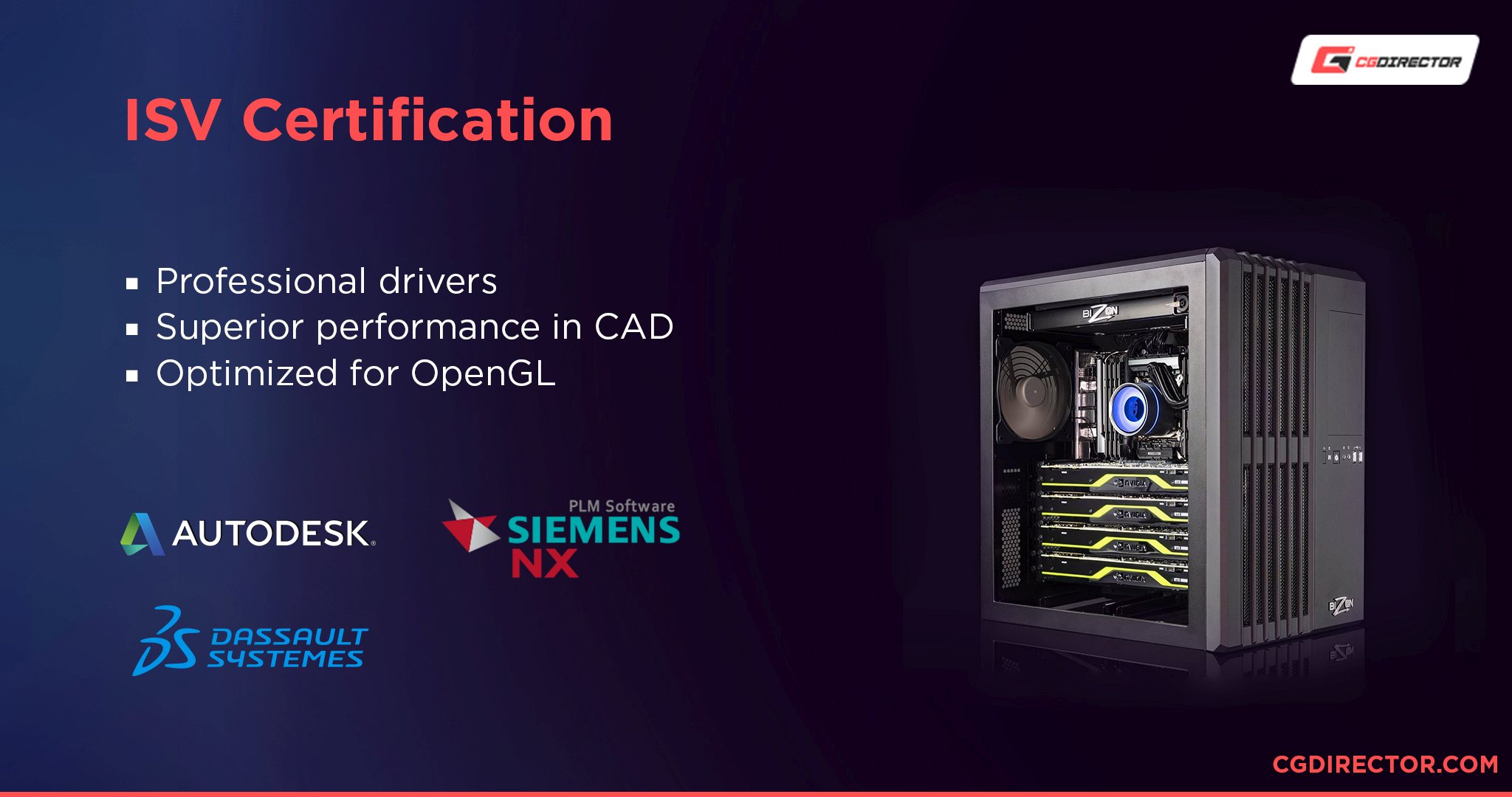
Certification ensures that the graphics card is optimized for running the application smoothly, mainly through professional drivers, which assures reliability and, in some cases, a significant performance edge over consumer cards with identical hardware.
A good example are CAD applications, most of which use OpenGL, an API (Advanced Programming Interface) for which Nvidia’s professional Quadro cards are highly optimized, while the company’s consumer GeForce cards are optimized for Direct3D and Vulkan APIs.
This doesn’t mean Pro or Consumer GPUs can’t run either API just fine, but they aren’t optimized for one or the other and especially not optimized to run certain applications the best they can.
The performance advantage of a professional card, especially in CAD applications like Siemens NX, is more apparent and one of the only scenarios where a competitively-priced professional card outperforms a consumer GPU.
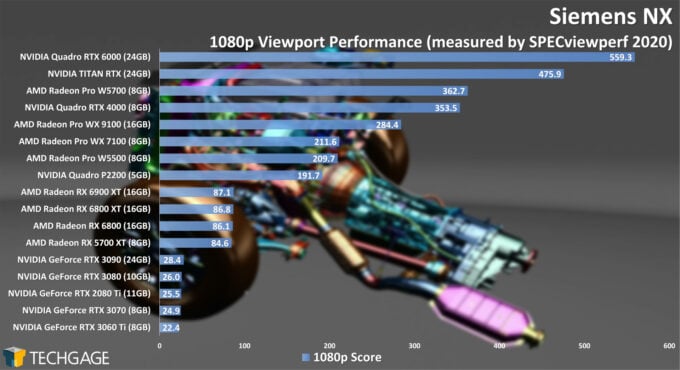
Image-Credit: TechGage
However, when choosing a graphics card for workloads like 3D rendering or video editing, the difference between consumer and pro-grade GPUs is minimal, making a consumer GPU a much more valuable choice.
Performance and Reliability
Consumer cards are usually tuned for applications like games where frames have to be rendered at a high frequency. To achieve high framerates, the graphics card hardware is typically pushed to its limits via overclocking, much of which is done by the manufacturers and board partners themselves.
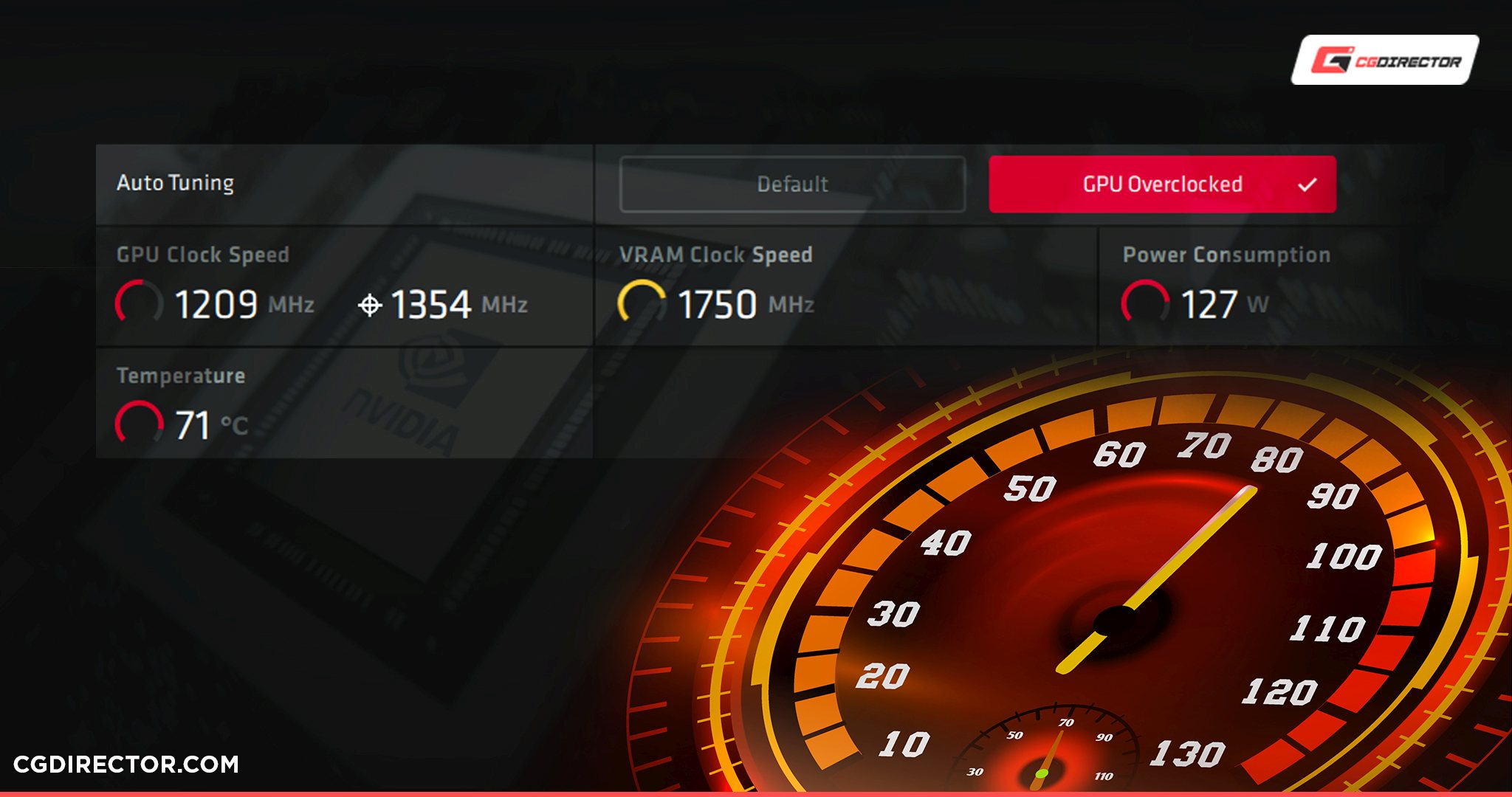
Pushing a card too much can lead to instability and crashes, which, although undesirable, have a minimal impact on a consumer’s experience and are usually fixed with a game relaunch, driver reinstall, or underclocking the GPU.
Professional workloads, on the other hand, may take several days to render a single frame of a highly complex project or train a complex machine learning model.
Unlike games, these tasks require a high level of stability since a single crash can lead to expensive delays and a considerable amount of time wasted fixing the issue.
For an average PC-Gamer, the occasional crash does not justify paying over twice the cost of a consumer GPU to gain improved stability in games.
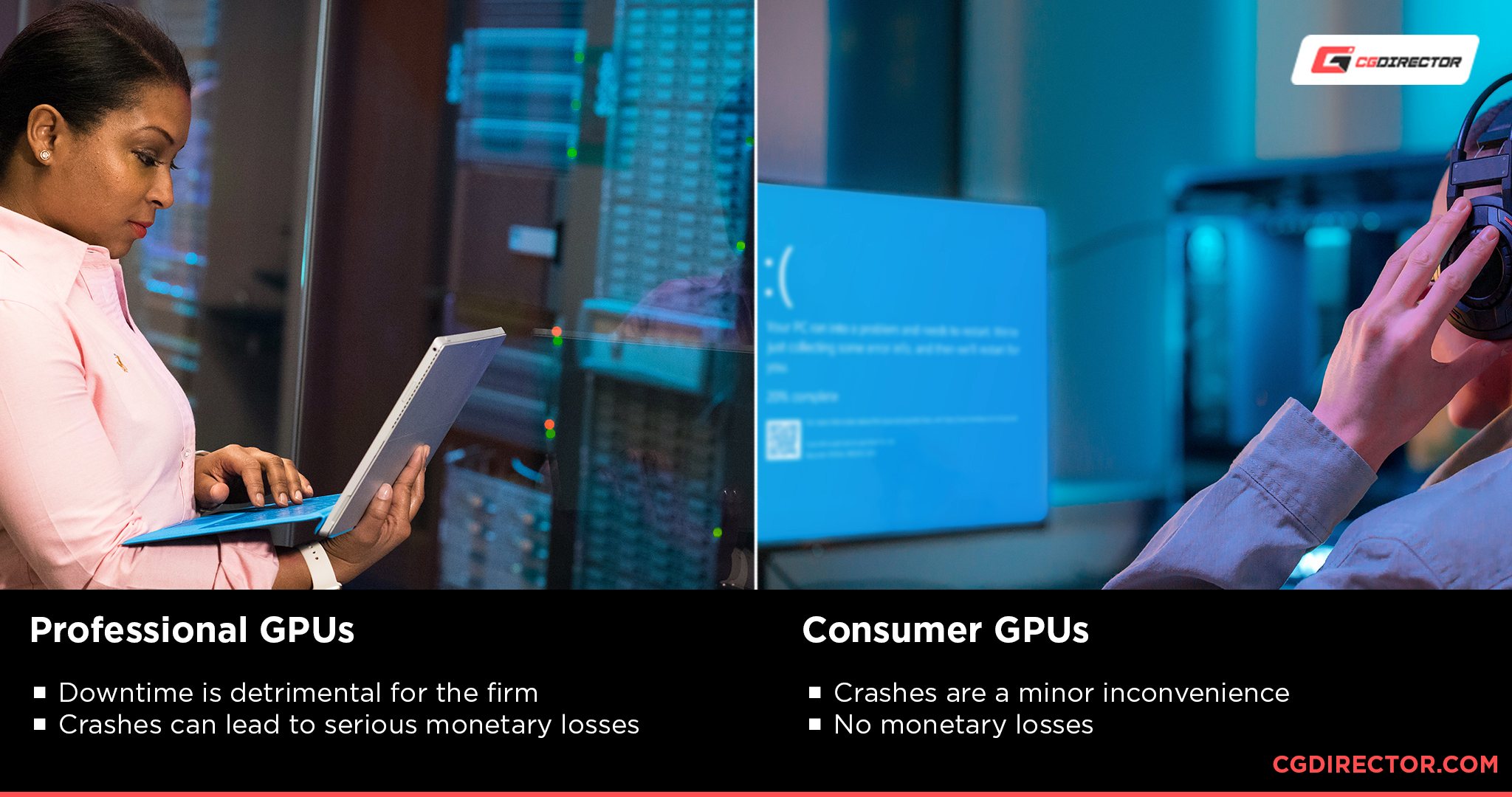
However, for large corporations that depend on graphics cards, and other hardware, to stay competitive, a crash or driver incompatibility can lead to large monetary losses in wasted time that exceeds the upfront cost of upgrading to a professional GPU.
To ensure the best reliability, manufacturers typically release their consumer cards into the mass market before professional GPUs, to work out any bugs and develop stable and optimized drivers.
They also work closely with ISVs to guarantee compatibility and minimize any chances of instability and crashes.
Drivers developed for professional GPUs are tested more thoroughly and therefore less frequently updated, unlike their consumer counterparts, to reduce the downtime required to update systems that are supposed to be running 24/7. Pro drivers are more stable and extensively tested before deployment.
Support
One thing you can be sure of when purchasing a professional card is the benefit of access to enterprise-grade support from the manufacturer and ISVs.
While AMD and Nvidia design and manufacture the GPU die (or let third party fabs manufacture the die) and create reference Designs for their GPUs, for consumer cards, they work together with so-called Board-Partners (Asus, MSI, Gigabyte, and others).
These Board Partners take the GPUs’ reference designs and create / assemble their own working version of the GPU with sourced parts such as power supply, VRAM, GPU Die, VRMs, and so on.

If any issue arises with your card, the support and warranty are handled by the board partner. Since board partners are not responsible for software, getting help for driver or software issues is difficult.
Professional GPUs, on the other hand, are more closely assembled mainly by Nvidia and AMD themselves (Though some board partners like PNY can be involved).
Still, manufacturers have tighter control over the process and handle support for both hardware and software, so you can be sure of receiving both hardware and software support for any issues from the same source. The same source that also handles ISV certification for specific Software you might be using.
With software vendors (such as Autodesk, Dassault Systemes…) only providing support for issues related to GPUs that are ISV certified, if you come across software instability and other issues on a consumer graphics card, there is not much you can do than try to fix the issue yourself.
So, if you are able to work with limited technical support from ISVs or the manufacturer in solving any issues with your graphics card, then a consumer GPU can be the more valuable option for you – given its higher performance per dollar.
Choosing a professional GPU, on the other hand, can save a considerable amount of time and money when you’re working on expensive projects and issues arise.
Exclusive Features
Since pro GPUs are designed with professional workloads in mind, they come with additional features that may be helpful or even necessary for the particular work you do. Some of them are as follows:
Nvidia Quadro Sync and AMD Eyefinity
Nvidia’s Quadro lineup makes use of a peripheral board known as the Quadro Sync to drive multiple (up to 32 4K) displays for use in applications requiring ultra-high resolutions like a video wall or flight simulator.
AMD’s Radeon Pro lineup also supports up to eight 4K displays from a single GPU.
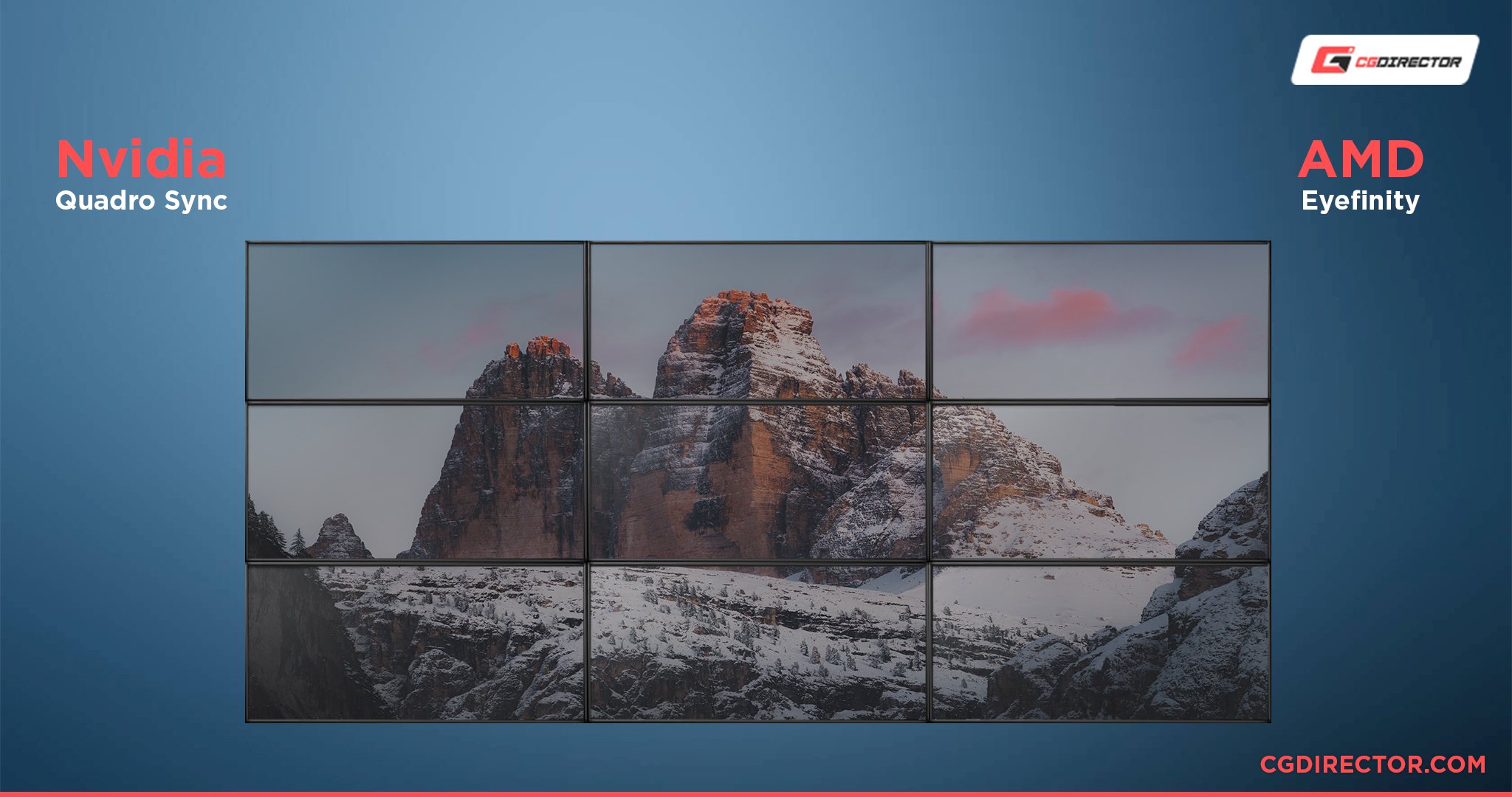
Both GPUs also feature support for stereoscopic 3D, which is similar to what you would experience while watching a 3D movie at cinemas by creating an illusion of depth by displaying two separate images.
This is especially useful for labs where researchers can, for example, study molecules more easily.
GPU Virtualization
With remote work becoming ever more popular, the ability to access your workstation from anywhere is a valuable feature. Professional GPUs can perform as virtual GPUs, allowing organizations and individuals to access an accelerated graphics environment from a remote area.

Besides remote access, you can also share a single GPU among several workstations if the need arises. Thanks to certification from ISVs, you can also rest assured that the GPUs you work on will run software reliably, even in a virtual environment.
Software Features
Some Professional Software support features exclusively on professional GPUs. One good example is SolidWorks’ Viewport Feature RealView which offers realistic lighting, reflections, and effects without offline rendering.
While there are ways to get such features working on consumer GPUs, they are often buggy and increase the risk of instability. If you need such Features investing in a professional GPU is the better option.
Hardware
Binned Components
Since manufacturers like Nvidia and AMD have complete control over the manufacturing process of professional GPUs, they get to cherry-pick components like the GPU die and memory in a process known as binning.
These “binned” components have the advantage of being able to run at higher clocks while consuming less power. This translates to better performance while maintaining lower temperatures.
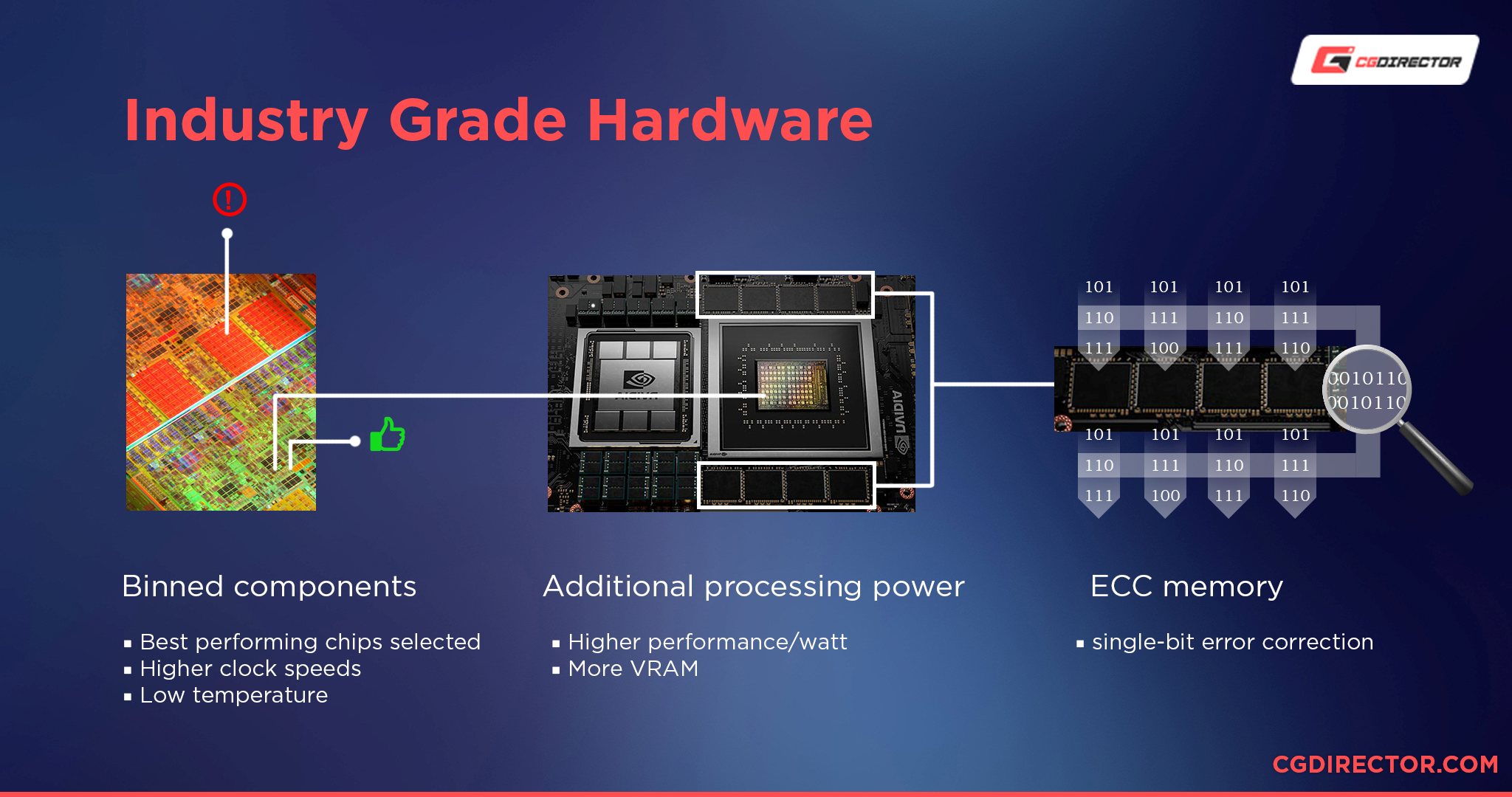
When buying third-party consumer GPUs from a board partner, you are not guaranteed to get “binned” components – it’s up to chance pretty much. You can get a great GPU or one that struggles with clock speeds.
With many board partners overclocking and operating their graphics cards at higher power limits and core voltages to improve performance it can lead to higher temperatures, potentially decreased lifespan, and make the GPU more prone to instability.
Pro-level GPUs are much more likely to be made of higher-binned components that are less prone to instability. This is also a big part of where the higher pricing comes from.
Additional Processing
While they might share a similar GPU die with consumer cards, professional GPUs tend to have more processing cores enabled, a direct result of the manufacturer reserving the better silicon. This gives them a slight performance edge on a hardware level, though by not much.
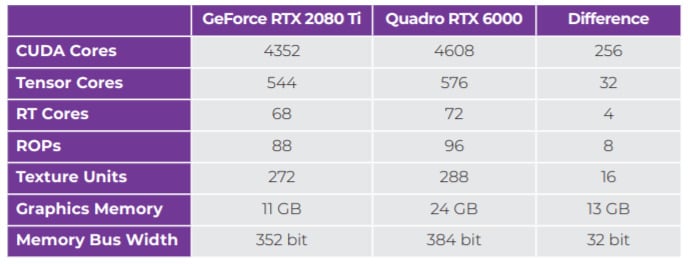
Image-Credit: Engineering
Where a professional card does pull ahead is in memory capacity. Unlike consumer workloads like games, where the memory consumption seldom exceeds the 10GB limit, professional workloads, especially highly complex ones, can frequently consume more VRAM than most consumer GPUs offer.
Professional cards aim to solve this by offering a large VRAM capacity, even in their mid-tier models, making it reasonable to spend the extra money if your workload demands it.
However, with prosumer cards like the Titan RTX and RTX 3090 now offering 24GB of VRAM, a large amount even for most professional workloads, you can work on complex workloads without compromising performance and spending the extra money.
Learn more about the VRAM requirements for your workload here.
ECC Memory
Apart from having a large memory capacity, professional GPUs also employ Error Correction Code or ECC memory capable of correcting single-bit errors due to random interference.
For an average consumer, such errors will lead to just a minor interruption in their daily workflow. For enterprise users and workloads like scientific and engineering simulations, a single bit-flip or random memory error can lead to erroneous results and a significant waste of time.
Cooling
With consumer cards being tuned for performance mainly through overclocking, most third-party vendors responsible for manufacturing these cards will employ robust cooling solutions to keep temperatures in check.
Most consumer GPUs employ open-air configurations that vent air directly into the case and typically take the form of massive multi-fan systems that take up several slots in your PC case.
Nvidia and AMD did employ a blower-style cooling system in their older consumer GPUs, though only board partners feature them in current generations, with the occurrence of such cards being quite rare.
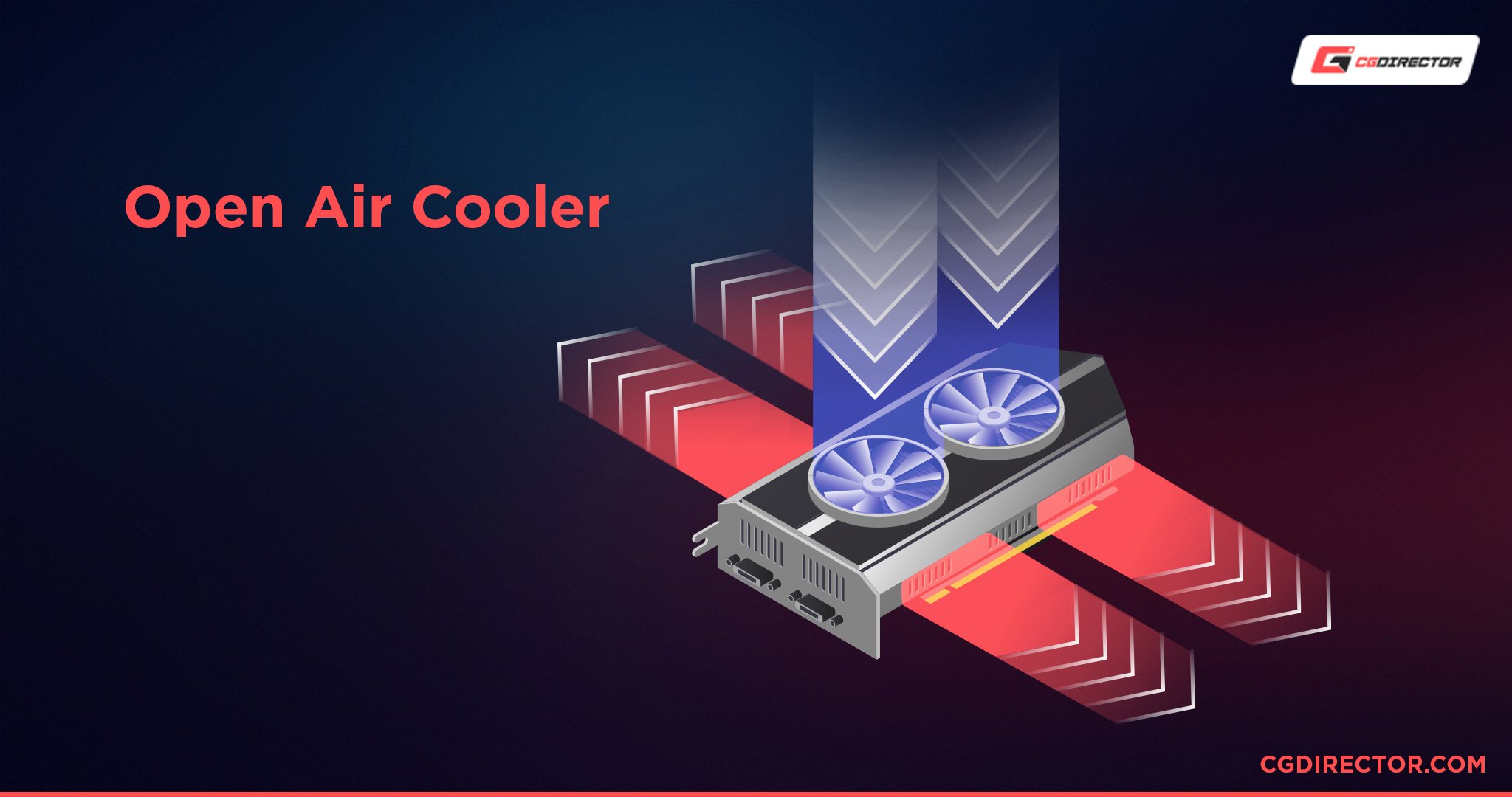
While open-air coolers are great for performance, you are limited to a single card since multiple GPUs venting hot air into the case is not great for thermals and will quickly lead to performance-throttling.
Also, the large size of these cards makes it difficult to fit them in tight spaces unless you are willing to go the liquid cooling route, though this can add additional complexity and cost to your PC-Building endeavor.
On the other hand, professional cards focus on providing the best stability and are clocked lower than their consumer counterparts. This allows manufacturers to use blower-style coolers that push air directly out of the case while occupying only one or two slots in a system.
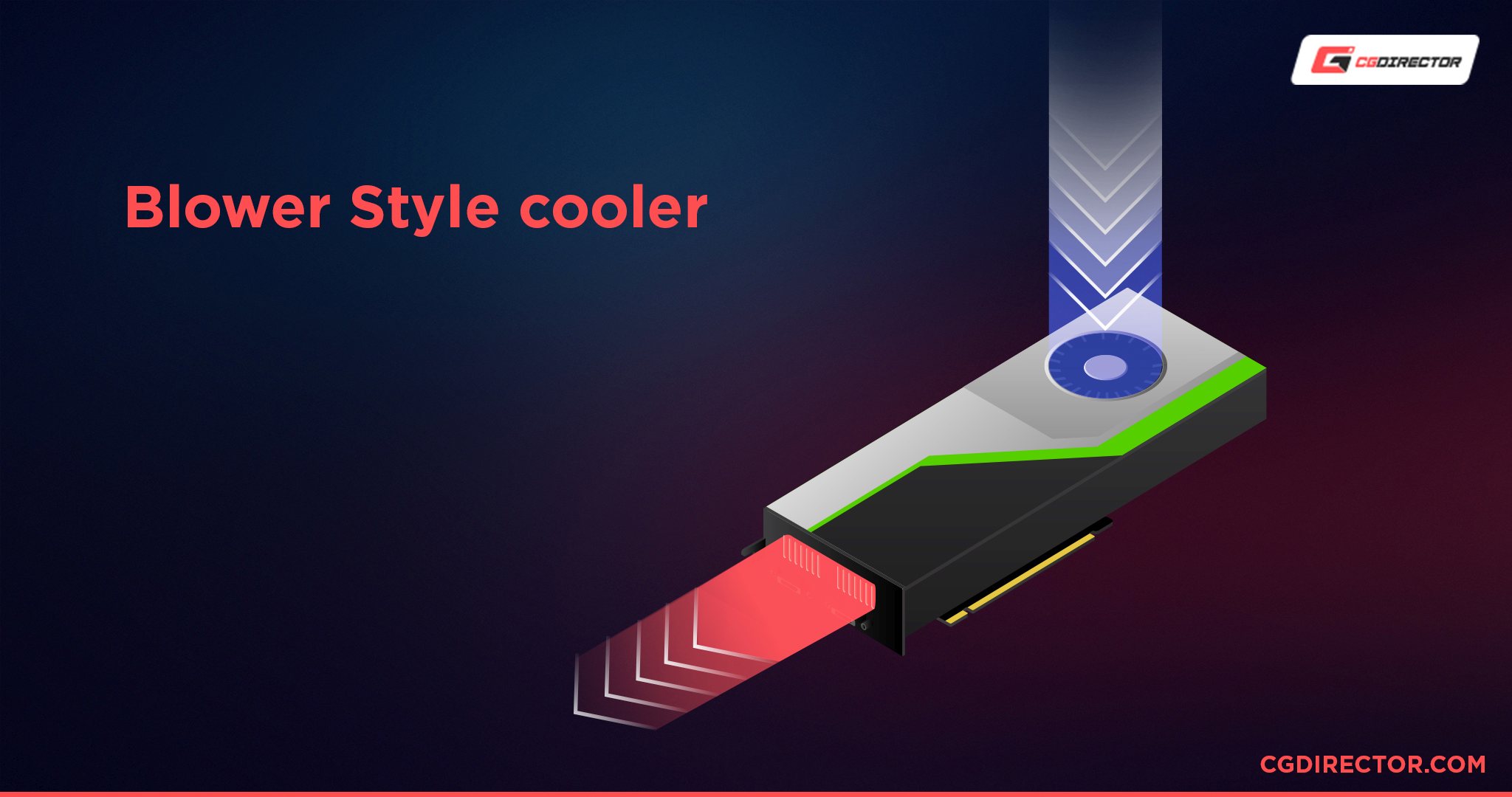
This design makes installing multiple professional GPUs in a single compact system or server environment more straightforward and is the reason why companies who employ server systems stick with them.
Multi-GPU
Both AMD and Nvidia include specialized multi-GPU connectivity through their respective Infinity Fabric link and NVLink connectors. While AMD only includes this in their flagship Radeon Pro VII, Nvidia integrates the technology across their pro lineup, even in their mid-range Pro GPUs.
Consumer GeForce GPUs have also featured the NVLink technology. However, the feature is slowly being limited to only the more expensive GPUs, like Nvidia’s RTX 3090 in the current generation.
Solely basing your decision on hardware is not the right way forward since the actual performance benefits of Pro GPUs over consumer GPUs are minimal.
What is more important is the certified professional drivers and support that should justify going with a professional GPU if you can make use of it.
When do you need a Professional GPU?
- Need extensive support from manufacturers and software vendors exclusive to professional GPUs.
- Use programs highly optimized for professional GPUs (e.g., high-end CAD/CAM applications, scientific and engineering simulations, etc.) that use the additional VRAM, processing units, and ECC memory.
- Require features like virtual GPUs or the ability to drive a large number of high-resolution displays or run stereoscopic 3D displays.
- Need to run multiple GPUs in a compact server environment 24/7, without needing regular downtime for maintenance (driver updates, etc.)
- Are confident that a professional card’s certified reliability and features will justify its higher upfront cost over a consumer card.
When do you need a Consumer GPU?
- Do not need features like virtual GPUs, the ability to drive multiple high-res displays, and specialized software features like SolidWorks’ Real View.
- Building a PC on a limited budget where the price-to-performance is more important than ISV certification and optimized, long-life drivers.
- Don’t run workloads like simulations that require ECC memory for accurate results.
- Can deal with downtimes due to driver incompatibilities, etc., without needing professional support.
- Use the graphics card for gaming and other workloads aimed at consumer GPUs.
GPU recommendations for different workloads
Here’s a quick overview table with popular workloads and which GPUs we recommend for it.
| Workload | |||
|---|---|---|---|
| Workload Complexity | Low | Medium | High |
| 3D Modelling and Animation | GTX 1660 Super, RTX 2060 Super | RTX 3070, RTX 2070 Super | RTX 3080, RTX 2080 Ti RTX A4000 |
| 3D Rendering | GTX 1660 Super, RTX 2060 Super | RTX 3080, RTX 2080 Ti Quadro RTX A4000 | RTX 3090, Titan RTX RTX A5000 |
| CAD | GTX 1660 Super, RX 5700 XT Quadro P5500 | RTX 3060 Ti, RX 6800 Quadro RTX 4000 | RTX 3080, RX 6900 XT RTX A4000, Quadro RTX 5000 |
| Simulations | RX 6800 | RX 6900 XT, RX 6800 XT RTX A4000, Quadro RTX 5000 | RTX A5000, Quadro RTX 6000 |
| Video Editing, Motion Design, Compositing | GTX 1660 Super, RTX 2060 Super, RTX 3060 Ti | RTX 3080, RTX 2080 Ti | RTX 3090, Titan RTX RTX A5000 |
| Graphic Design | GTX 1660 Super, RTX 2060 Super | RTX 3070, RTX 3060 Ti | |
| Gaming | GTX 1660 Super, RTX 2060 Super | RTX 3060, RX 6700 XT | RTX 3080, RX 6800 XT |
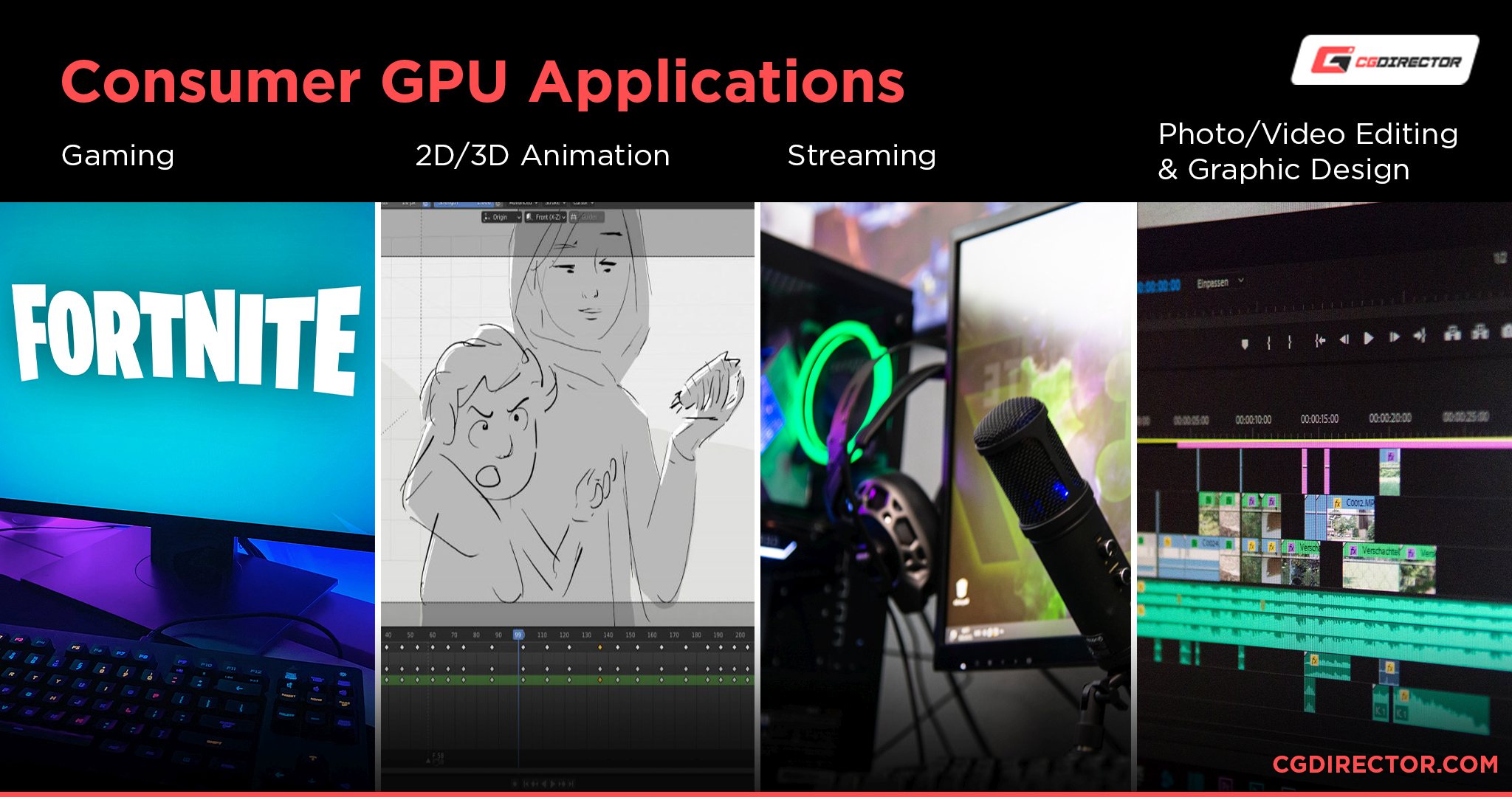
Some Applications are served by both worlds, consumer and professional GPUs. 3D Animation is one such area. We recommend consumer GPUs for 3D Animators working as freelancers or businesses working on smaller projects with less crucial timelines.
Big Animation Studios with large projects and tight deadlines should rely on more stable professional GPUs.
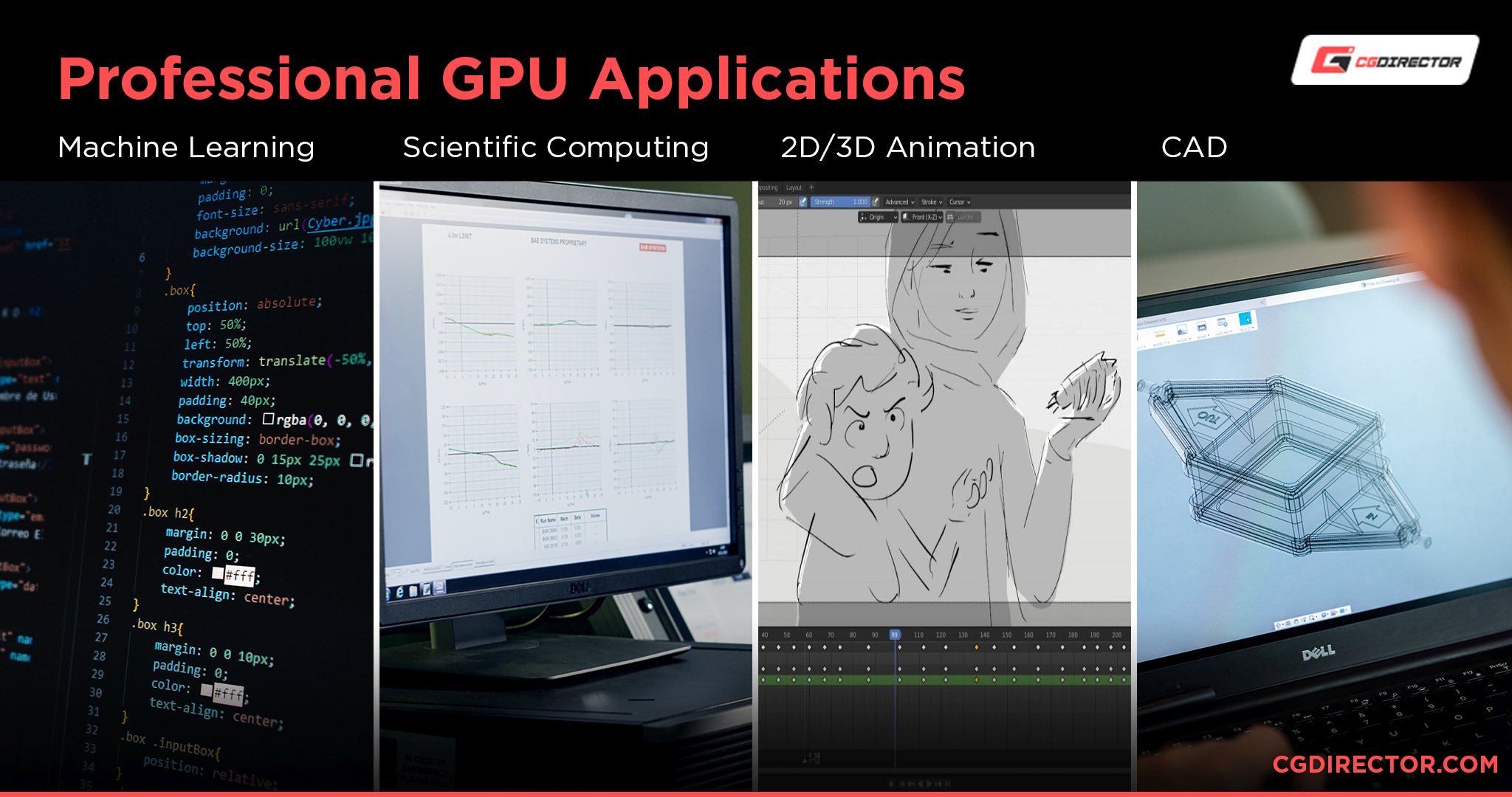
FAQs
Why are Quadro/Radeon Pro GPUs so expensive?
The additional steps Nvidia and AMD have to go through with ISVs in certifying and developing their hardware and drivers for use with professional applications adds to the cost of professional cards. They also feature binned dies and specialized components like ECC memory that make them more expensive to manufacture.
Can you use Quadro/Radeon Pro GPUs for gaming?
While professional GPUs are created for workstations, gaming on them is possible, though the gaming performance will be significantly lower than a comparably priced consumer card. Since they are tuned for stability and feature blower-style coolers, using professional cards at higher clock speeds will be difficult.
What kind of GPU are you thinking of buying? Let us know in the comments or in our expert forum.
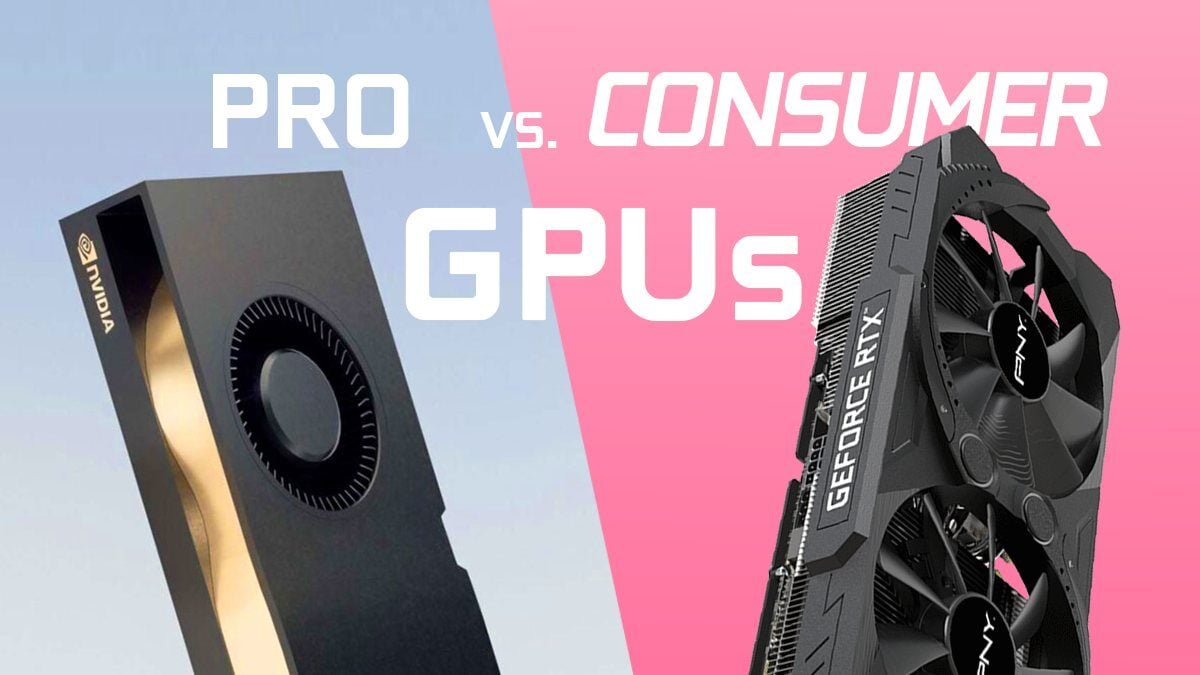
![Guide to Undervolting your GPU [Step by Step] Guide to Undervolting your GPU [Step by Step]](https://www.cgdirector.com/wp-content/uploads/media/2024/04/Guide-to-Undervolting-your-GPU-Twitter-594x335.jpg)
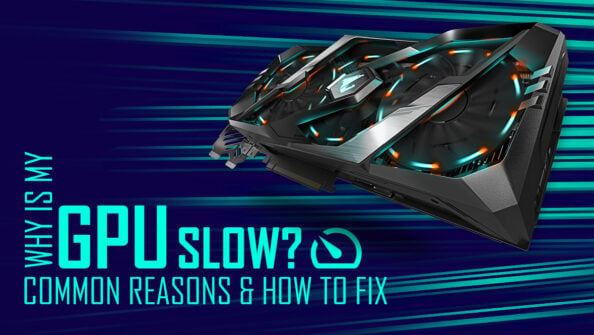
![Are Intel ARC GPUs Any Good? [2024 Update] Are Intel ARC GPUs Any Good? [2024 Update]](https://www.cgdirector.com/wp-content/uploads/media/2024/02/Are-Intel-ARC-GPUs-Any-Good-Twitter-594x335.jpg)
![Graphics Card (GPU) Not Detected [How to Fix] Graphics Card (GPU) Not Detected [How to Fix]](https://www.cgdirector.com/wp-content/uploads/media/2024/01/Graphics-Card-GPU-Not-Detected-CGDIRECTOR-Twitter-594x335.jpg)

9 Comments
27 November, 2022
Hi Alex,
Great article, there’s lots of good learnings in here about professional gpus. I know you mentioned the fact that professional cards have optimized, long-life drivers. What would be the difference in longevity of pro cards vs. consumer? If professional gpus have longer support for drivers, does it have the same obsolescence factor as consumer cards?
13 December, 2022
Because PRO-level GPUs aren’t pushed to their clock limits in such an extreme way as consumer GPUs are, I’d fathom that, yes, their longevity should be significantly better.
PRO-level GPUs also often have cherry-picked silicon, that may be less prone to wear and tear over time.
Cheers,
Alex
13 March, 2022
Hi,
I’m entering game design and looking at building a workstation.
Everyone seems to be on PC for Unreal Engine.
But now with Mac M1 Ultra, is the Mac CPU better now? What are your thoughts?
Thanks
13 March, 2022
The new Apple chips are looking pretty good for sure. One thing to consider, though, is for what platforms you’re looking to develop. If you want to optimize apps and games to run on Windows with CUDA or OpenCL, a Mac might not be the best for testing even if the new M1 Ultra packs some serious power.
Cheers,
Alex
13 March, 2022
That seems to be the consistent info on the subject. I am wanting to study for gaming and make film clips like mandalorian film work.
I don’t want to make apps for iPhone etc games for phones.
Want to do 3D game and movie work like AAA games.
Looks like it’s pc then. I’ve seen your workstation recommendation so will build something similar.
Thanks
22 November, 2021
Can a professional play Call Of Duty video games during free time using NVIDIA A5000 graphic cards?
28 November, 2021
You can absolutely game on the NVIDIA A5000 and any PRO level GPU. They are meant for different things and won’t perform as well as a specialized gaming GPU (especially given the high price) but it’ll run COD just fine.
Cheers,
Alex
29 April, 2021
“What kind of GPU are you thinking of buying? ” None because there arent any to purchase at the moment 😀
29 April, 2021
Hey Guillaume,
I hear you, it sucks! 🙁
Alex